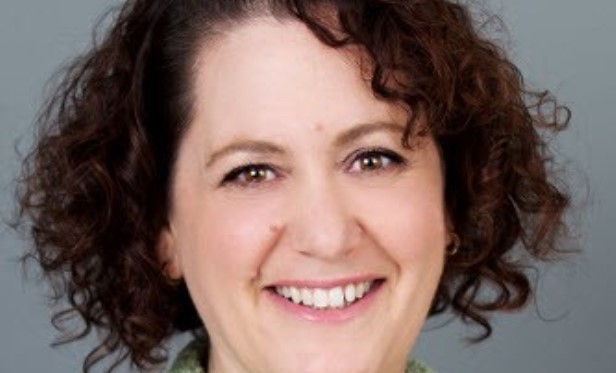 NKF's Arata says the office market is slowing down because there are few viable options for tenants.
NKF's Arata says the office market is slowing down because there are few viable options for tenants.
SAN FRANCISCO—The combination of a vacancy rate of 3.9%, not seen since the dot.com era, with the highest tenant demand in seven years has resulted in an extremely competitive office market, according to Newmark Knight Frank's third quarter San Francisco office research report. Currently, tenant demand of 7.6 million square feet outpaces availability at 7.4 million square feet, mainly in the large user category. Despite the low vacancy rate, absorption is anticipated to remain strong for the remainder of the year.
The 22 tenants seeking blocks of space of 100,000 square feet or greater make up 3.2 million square feet of the current demand, but there are currently only 10 existing buildings with available blocks greater than 100,000 square feet, many of which have leases pending. Large block pricing has increased to the low $90s per square foot, which is 12 to 15% higher than the market average.
“The demand is certainly coming from large users looking for 100,000 square feet and above,” Andrea Arata, Newmark Knight Frank's director of research, tells GlobeSt.com. “As a result, the market is slowing down because there is nowhere to move. Prop M has limited how much can be built.”
Arata points out that there are no new large-block developments (in excess of 100,000 square feet) in the pipeline next year and just two developments slated for the two following years: 633 Folsom is slated for 2020 and 100 First St. is in the works for a 2021 completion date at the earliest.
She says more space in pre-leased new developments was occupied this quarter, driving absorption to 2.6 million square feet year-to-date. This dearth has tenants scrambling to find quality space, either choosing to wait it out and look for shadow space to come on the market or move to Oakland where rents are cheaper, Arata observes.
Another option is co-working space, which is coming at a premium of 30 to 50%. This sector continued to disrupt the market by increasing competition for landlords offering smaller spaces. Co-working companies now take up 3% of the space in the market, serving as a back-up plan until larger space becomes available. By the end of the quarter, 12 co-working companies sought a combined 560,000 square feet of space.
“As a result, brokerages are getting more competitive and landlords are happy because they can charge the world,” Arata tells GlobeSt.com.
Specifically, vacancy rates in both the North and South financial districts decreased in the third quarter. North Financial District vacancy dropped to 4.9% from 6% last quarter, while class-A vacancy dropped to 4% from 5.3%. South Financial District vacancy is even tighter, as overall vacancy dropped to 2.5% from 3.1% and class-A vacancy dropped to 2.4% from 3.1%. In SoMa, class-A space in both Mission Bay and Potrero/Showplace Square is now fully leased.
In addition, other preleased space includes 1515 3rd St. and the Uber campus.
The tight market fundamentals caused asking rates to increase again in the third quarter, growing marketwide by 1.8% since last quarter to an average of $79.16 per square foot, a year-over-year increase of 9.3%. Class-A rates have increased by 10.3% year-over-year to $82.56 per square foot.
Five leases of more than 100,000 square feet were signed during the quarter: Twilio's new 259,416- square-foot sublease from Salesforce at 101 Spear St., PricewaterhouseCooper's new 196,356-square-foot lease at 405 Howard St., Amazon's 143,168-square-foot expansion at 525 Market St., Square's 104,135-square-foot expansion at 1455 Market St. and SoFi's new 100,800-square-foot lease at 1 Tehama St.
All of this demand has buyers remaining attracted to San Francisco's market fundamentals. The largest transaction this quarter was Divco West's and CalSTRS's acquisition of 301 Howard St. from Vanbarton Group for $293 million. Occupancy at the time of sale was near 98%. Also this quarter, Rubicon Point Partners purchased the 85,180-square-foot office at 1130 Market St. also known as United Nations Plaza, from the Kivelstadt Group for $49 million. Jamestown acquired the 37,822-square-foot office and retail building at 660 Market St. from Bentall Kennedy for $40 million. Additionally, Lincoln Property Company and Rockwood Capital purchased 332 Pine St. from Polidev Investments for $38 million.
Several properties are on the market or are expected to come on the market soon, including the Transamerica Pyramid, 500 Pine, 101 Mission, 260 Townsend, 274 Brannan, 600 Battery, 360 Spear, 255 California, 351 California, 747 Front and a 49% interest in Park Tower.
© Touchpoint Markets, All Rights Reserved. Request academic re-use from www.copyright.com. All other uses, submit a request to [email protected]. For more inforrmation visit Asset & Logo Licensing.







